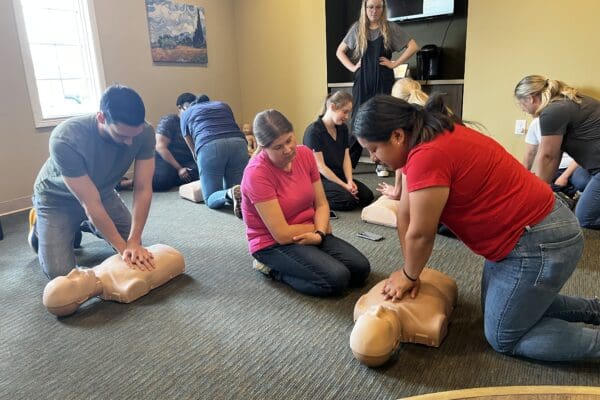When it comes to life-saving techniques, Basic Life Support (BLS) and Cardiopulmonary Resuscitation (CPR) are often mentioned. While both are crucial in emergency situations, they are designed for different audiences and cover varying levels of complexity. In this blog post, we’ll explore the key differences between BLS and CPR to help you understand which one is right for you.
Basic Life Support (BLS)
Target Audience: BLS is primarily aimed at healthcare professionals and those working in medical settings, such as:
- Doctors
- Nurses
- Paramedics
- Emergency Medical Technicians (EMTs)
Training Content: BLS training includes a comprehensive range of techniques and scenarios:
- Advanced Techniques: High-quality chest compressions, airway management, and rescue breathing.
- Team Dynamics: Training on effective team collaboration during resuscitation efforts.
- Use of Medical Equipment: Instruction on using advanced medical tools like bag-valve-masks (BVMs) and advanced airway devices.
- Critical Assessment: Emphasis on rapid assessment and decision-making skills.
Certification and Requirements:
- Certification: Involves passing both a written exam and a practical skills test.
- Recertification: Typically required every two years to ensure up-to-date knowledge and skills.
Scenarios Covered: BLS training prepares individuals for various emergencies, including:
- Cardiac arrest
- Respiratory arrest
- Foreign body airway obstruction (choking)
Cardiopulmonary Resuscitation (CPR)
Target Audience: CPR training is designed for the general public, including:
- Teachers
- Coaches
- Parents
- Babysitters
- Anyone interested in learning basic life-saving skills
Training Content: CPR training focuses on essential techniques for responding to cardiac emergencies:
- Basic Techniques: Chest compressions and rescue breaths.
- AED Use: Basic instruction on using an Automated External Defibrillator (AED).
- Hands-Only CPR: Training might include compressions without breaths, which is recommended for untrained rescuers.
Certification and Requirements:
- Certification: Typically involves a shorter course with a practical skills assessment.
- Recertification: Also recommended every two years, though the process is generally simpler than BLS recertification.
Scenarios Covered: CPR training prepares individuals to handle:
- Cardiac arrest
- Choking emergencies
Key Differences Between BLS and CPR
- Audience: BLS is tailored for healthcare professionals, while CPR is intended for the general public.
- Content: BLS includes advanced techniques and the use of medical equipment; CPR focuses on basic life-saving skills.
- Training Complexity: BLS training is more comprehensive and detailed; CPR training is more straightforward and accessible.
- Certification: BLS certification involves rigorous testing; CPR certification is simpler and quicker to obtain.
Why It Matters
Understanding the differences between BLS and CPR is crucial for choosing the right training based on your needs and responsibilities. Whether you are a healthcare professional requiring advanced skills or a layperson wanting to be prepared for emergencies, both BLS and CPR offer valuable life-saving techniques.
Get Trained Today
At Arise Safety and CPR, we offer both BLS and CPR training to ensure you are equipped with the knowledge and confidence to handle emergencies effectively. Contact us today to find out more about our courses and schedule your training.
Sign up today for a class! Visit us at https://arisesafety.com/ to sign up for our next class
Sources:
Understanding these critical differences can help ensure that you and those around you are prepared and capable in emergency situations. Stay safe and get certified today!





